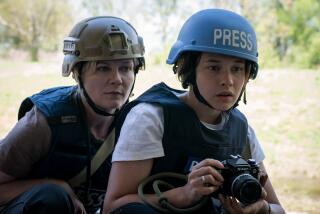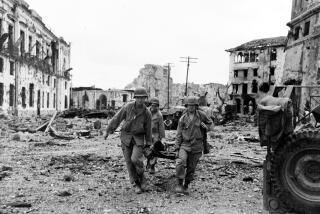Sri Lanka road trip finds north and south still divided after civil war

- Share via
Reporting from ALONG THE A9 HIGHWAY, Sri Lanka — The road from Colombo, Sri Lanka’s graceful seaside capital in the south, to the northern town of Jaffna has rarely been a straight shot. Most of the 250-mile journey follows the A9 highway, which slices through palm groves and green carpets of farmland that were the main battlegrounds of the country’s three-decade civil war.
During the worst fighting between an army dominated by the Sinhalese ethnic majority and rebels from the mainly Tamil north, long stretches of A9 were closed to civilian traffic. As the main supply line for Tamil Tiger rebels fighting for an independent homeland, it held immense strategic value.
The highway was “the sole, fraying thread binding the north to the south, holding together the notion of an undivided Sri Lanka,” wrote journalist Samanth Subramanian in his 2014 book on the war, “This Divided Island.”
Since 2009, when the rebels finally succumbed to a ruthless army offensive, the highway has been refurbished by a government seeking to swiftly sew up the wounds of the conflict.
Sinhalese have begun to visit the Tamil region, their blue-striped tour buses visible at Buddhist shrines or hastily erected war memorials along the A9. Tamils observe the outsiders warily; relations between the two peoples, who share an island scarcely larger than West Virginia, are still marked by suspicion and mutual misunderstanding.
The authoritarian former President Mahinda Rajapaksa last year briefly barred foreigners from entering the north without permission, a panicky move before an election that he would eventually lose. With a new government having lifted the restriction, I set off recently along the A9 for the nine-hour ride from Colombo to the Jaffna peninsula, the Tamil’s historical heartland.
At the wheel was Nuwan, a young, solidly built Sinhalese whose slight mohawk gave his head the appearance of a bullet. Like most southerners who grew up in the war years, he had never been to the north.
We climbed above Colombo’s humid tropics into verdant hill country and then turned north onto the A9, which sloped gently into a flat, arid stretch of rice fields. Nuwan marveled at the smooth ribbon of road — I had to ask that he stop taking cellphone pictures of the landscape while driving — but then subtle markers of strife began to appear.
In the town of Tirappane, we were greeted by a giant election billboard showing a beaming Rajapaksa, clad as always in the gleaming white tunic that advertised him as a devout Sinhalese Buddhist.
The war had neatly cleaved Sri Lanka along confessional lines, between Sinhalese Buddhists and the multi-faith Tamils. In the south, the eggshell domes of Buddhist shrines seem to be the only religious sites, but now we began to see the trapezoidal towers of Hindu temples, studded with brightly painted gods, and more sober-looking mosques and churches.
We reached Omanthai, a dot on the map where government forces still maintain a checkpoint. During the war and for most of its aftermath, foreigners had to disembark here and duck into a shed to submit to army questioning. On this afternoon, bored-looking soldiers did not even look at me, and after Nuwan entered his license number in the army ledger we were back on our way.
Occasionally I would see the Sinhalese tour buses parked along the roadside, or Sinhalese families picnicking in the shade of a tree. In Kilinochchi, the Tigers’ former capital, several buses were stopped next to what looked like a giant funnel tipped onto its side.
It was a water tank that had been toppled during the fighting, the steel rebar reaching out from the concrete husk like tentacles. The government had turned it into a war memorial, planting a tidy garden with flowers and a large stone tablet declaring that the damage had been done by rebel “terrorists in the face of valiant troops.”
A few Sinhalese families milled about, staring gravely at the detritus. Some wandered into a gift shop where souvenir T-shirts and caps were for sale. I would later meet Tamils who deeply resented the monument, viewing it as a bid by Rajapaksa to rub their noses in the rebels’ defeat.
“They take pictures like they’ve never seen a water tank before,” said Christie Shanthni, an outspoken 50-year-old coordinator of a women’s cooperative in Kilinochchi. “We don’t mind if they come here, but I often wonder how they would feel if we went around in busloads celebrating the exploits of Tamil fighters.”
A few years after the fighting ended, with tens of thousands of war deaths, Shanthni visited the former bunker of the Tigers’ slain leader, Vellupillai Prabhakaran, which the government opened to visitors in the coastal area of Mullaitivu. She and her companion were the only Tamils there, she recalled, and they understood little because the tour guide spoke only Sinhalese.
The government reportedly destroyed the bunker in 2013, perhaps fearing that it would contribute to Prabhakaran’s cult-hero status.
Before I left Colombo, a friend advised me to visit a bank, saying, “You don’t want to get stuck in the north without cash.” That would have been difficult; every little town along A9 had multiple banks with ATMs, part of the economic development that Rajapaksa often boasted he brought to the north.
Yet Tamils saw that too in a darker light. The banks and lending companies offered easy financing for motorcycles, appliances and other consumer goods that were suddenly available in this long-shuttered economy. Many families plunged into debt — another ploy by the south, in the eyes of some, to subjugate the Tamils.
The afternoon light melted into the horizon as we pulled into sleepy Jaffna and I alighted at my guesthouse. At breakfast, I met a Sinhalese man who had emigrated to Los Angeles and was visiting the north for the first time with his mother.
Jaffna was nice, he said, except he was surprised that almost no one spoke Sinhalese. I watched him struggle to communicate with the Tamil-speaking kitchen staff in English, just as I did. It suddenly struck me that he, a native Sri Lankan, and I, an American visiting for the first time, were almost equally foreign in this war-scarred place.
More to Read
Sign up for Essential California
The most important California stories and recommendations in your inbox every morning.
You may occasionally receive promotional content from the Los Angeles Times.











